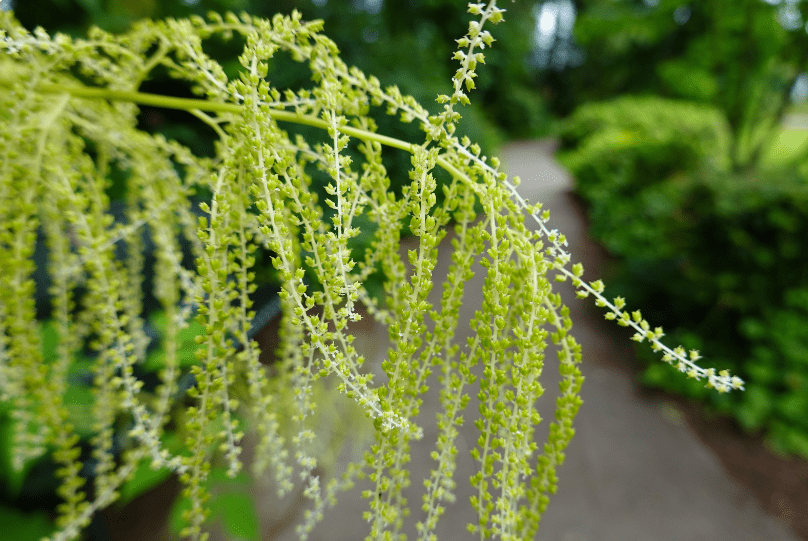
Are you looking to add a touch of elegance and beauty to your garden? Look no further than Aruncus Dioicus, commonly known as Goat’s Beard. This stunning shrub, with its delicate green feathery plumes and beautiful seed heads, will be a captivating addition to any garden.
Whether you are a seasoned gardener or a beginner, this guide will give you the information you need to successfully grow and care for Goat’s Beard.
Key takeaways
- Aruncus Dioicus, or Goat’s Beard, is a shrub known for its unique characteristics and attractive green foliage.
- Growing Goat’s Beard in your garden can enhance the aesthetic appeal and create a stunning landscape.
- To ensure the successful growth of Aruncus Dioicus, it is vital to provide the ideal growing conditions and proper care and maintenance.
What is Aruncus Dioicus?
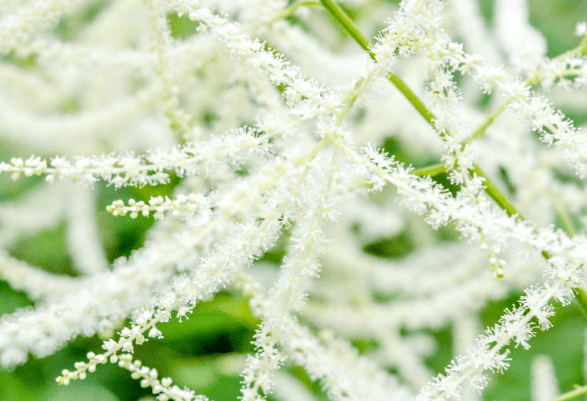
Aruncus Dioicus, also known as goatsbeard, is a deciduous perennial shrub that belongs to the Rosaceae family. This plant type is characterized by its large, compound leaves and impressive size, often reaching heights of up to six feet. The green foliage of Goat’s Beard adds a vibrant element to any garden, creating a lush and inviting atmosphere.
One of the unique characteristics of Aruncus Dioicus is its distinct seed heads, which resemble small white plumes that rise above the foliage. These seed heads add visual interest to the plant and attract various species of birds, making Goat’s Beard a delightful addition to any bird-friendly garden. Additionally, the seeds of Aruncus Dioicus can be collected and propagated to grow new plants, allowing you to expand your garden quickly.
Understanding the Unique Characteristics of Aruncus Dioicus
Aruncus Dioicus is a versatile shrub that offers a range of unique characteristics. The leaves of goatsbeard are pinnately compound, meaning they consist of multiple leaflets arranged on either side of a central stalk. These leaflets have a serrated edge and are typically a vibrant shade of green, providing a visually appealing contrast against the white seed heads.
Another notable characteristic of Aruncus Dioicus is its ability to grow in various soil type conditions. Whether you have clay, loam, or sandy soil, goatsbeard can thrive with proper care and maintenance. Additionally, Goat’s Beard can be grown in both full sun and partial shade, making it a versatile choice for gardeners with different light conditions.
Furthermore, Goat’s Beard is an excellent companion plant, providing a beautiful backdrop for other plants in your garden. Pairing Goat’s Beard goatsbeard companion plants such as Astilbe, Bleeding Heart, or Hostas can create a stunning display of colors and textures, adding depth and visual interest to your landscape. When planning your garden, consider the height and growth habit of Goat’s Beard to ensure it complements your existing astilbe plants.
Benefits of Growing Goatsbeard in Your Garden
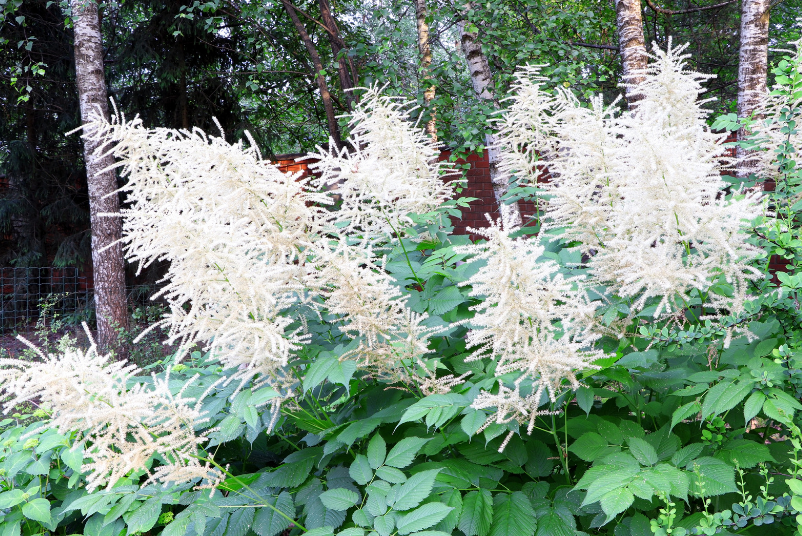
Adding Goat’s Beard to your garden offers many benefits beyond its visual appeal. One of the main advantages of growing a Goat’s Beard is its ability to enhance the aesthetic appeal of your outdoor space. The lush green foliage and striking seed heads create a captivating display that will catch the eye of anyone visiting your garden.
In addition to its visual appeal, Goat’s Beard provides practical soil benefits. This shrub has a deep root system that helps improve soil structure and prevent erosion. Furthermore, the fallen leaves of Aruncus Dioicus act as a natural mulch, retaining moisture in the soil and suppressing weed growth. These qualities make Goat’s Beard an excellent choice for maintaining a healthy, thriving shade garden.
When it comes to soil requirements, goatsbeard prefers rich, well-draining soil. It thrives in slightly acidic soil to neutral, with a pH ranging from 6.0 to 7.0. Before planting, it is advisable to amend your soil with organic matter such as compost or well-rotted manure to improve its fertility and drainage. This will provide an optimal environment for the growth and development of Goat’s Beard.
Ideal Growing Conditions for Aruncus Dioicus
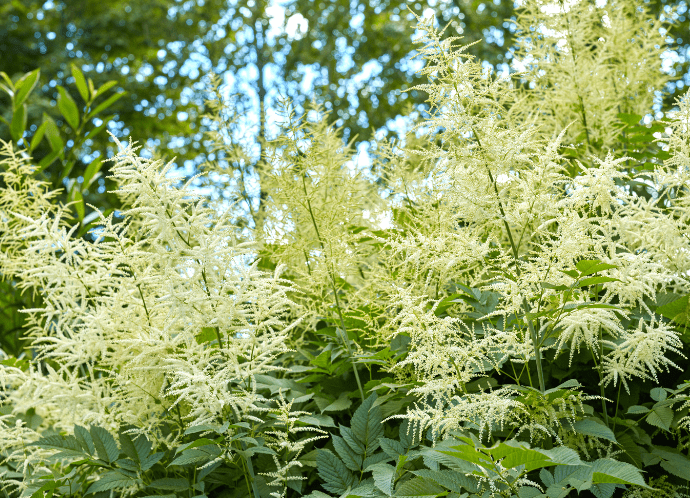
To ensure the successful growth of Aruncus Dioicus, it is essential to create the ideal growing conditions for this shrub. Goat’s Beard is a dioecious plant with separate male and female plants. To appreciate the lovely seed heads of Aruncus Dioicus, you need both male and female plants in your garden since only the female plants produce the seed heads.
Regarding host plants, goatsbeard can attract beneficial insects such as bees and butterflies. Planting Aruncus Dioicus near other flowering plants, such as coneflowers or phlox, can create a pollinator-friendly environment, contributing to your garden’s overall health and biodiversity.
It is also important to note that Goat’s Beard has relatively low maintenance once established. However, regular watering is crucial during the initial stages of growth to ensure proper establishment. Water deeply and consistently, especially during dry spells, to keep the soil moist but not soggy. Applying a layer of organic mulch around the base of the plant can help retain moisture and regulate soil temperature.
How to Plant Goat’s Beard in Your Garden

Planting a Goat’s Beard in your garden is a relatively straightforward process. Before you begin, choose a location that provides the ideal growing conditions, including well-draining soil and sufficient sunlight or partial shade. Once you have selected the perfect spot, follow these step-by-step instructions to plant Aruncus Dioicus:
- Prepare the soil: Dig a hole deep enough to accommodate the plant’s root ball. Make sure to loosen the rich soil and remove any weeds or debris.
- Plant the shrub: Place the Goat’s Beard plant in the hole, ensuring that the top of the root ball is level with or slightly above the soil surface. Backfill the hole with soil, gently firming it around the roots.
- Water thoroughly: After planting, give the shrub a thorough watering to settle the soil and eliminate any air pockets. Continue to water regularly during the establishment period.
- Mulch the base: Apply a layer of organic mulch, such as wood chips or shredded bark, around the base of the plant to conserve moisture and suppress weed growth.
- Monitor and care for the plant: Regularly check on the plant to ensure it is properly watered and free from pests or diseases. Prune any dead or damaged branches to maintain the health and appearance of the shrub.
For those looking for a more compact version of a Goat’s Beard, there is a dwarf goatsbeard variety known as Aruncus Dioicus ‘Noble Spirits.’ This cultivar offers all the beauty and unique characteristics of the original species but in a smaller, more manageable size. Whether you choose the traditional or dwarf variety, goatsbeard will make a stunning addition to your garden.
Proper Care and Maintenance of Aruncus Dioicus

Goat’s Beard is a relatively low-maintenance native plant, but it still requires proper care and maintenance to ensure its health and vitality. Here are some goatsbeard care tips and tricks to help you keep your Goat’s Beard healthy and vibrant flowers :
- Watering: While Goat’s Beard is relatively drought-tolerant once established, it is essential to water the plant consistently, especially during dry spells. Aim to provide about an inch of water per week through rainfall or irrigation.
- Fertilizing: Goat’s Beard does not require heavy fertilization. A balanced, slow-release fertilizer in early spring can help promote healthy growth and overall vigor.
- Pruning: Trim away any dead or damaged branches to maintain the appearance and health of goatsbeards. This can be done during the late fall or early spring when the plant is dormant.
- Pest control: Aruncus Dioicus is generally resistant to pests and diseases. However, occasional issues with aphids or powdery mildew may arise. If necessary, treat with appropriate insecticides or fungicides to control the problem.
- Division: Over time, Goat’s Beard may become overcrowded with flowers and require division to rejuvenate its growth. The best time to divide the plant is in early spring when the new growth begins to emerge. Dig up the clump and carefully separate male plants into smaller sections, ensuring each division has sufficient roots and foliage.
By following these care tips, you can ensure that your Goat’s Beard remains healthy and vibrant year after year, providing you with the beauty and elegance you desire in your garden.
Dealing with Common Pests and Diseases
While Goat’s Beard is generally resilient to pests and diseases, it may occasionally be affected by some common issues. Here are a few pests and diseases you may encounter when growing Aruncus Dioicus and how to deal with them:
- Aphids: These tiny insects can cause damage to the foliage of Goat’s Beard, resulting in distorted growth and yellowing leaves. Spray the affected plant with a strong jet of water to dislodge the aphids, or use insecticidal soap or neem oil to control the infestation.
- Powdery mildew: This fungal disease appears as a white, powdery coating on the leaves of Aruncus Dioicus. To prevent powdery mildew, ensure proper air circulation around the plant and avoid overhead watering. If powdery mildew is already present, treat it with a fungicidal spray to control this disease.
Regularly inspect your Goat’s Beard for signs of pests or diseases, and take prompt action to address any issues before they can spread and cause significant damage.
Harvesting and Using Goat’s Beard in Your Home
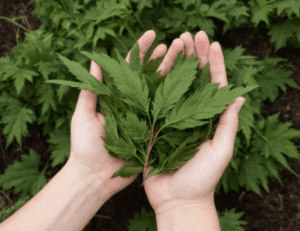
In addition to its ornamental value, Goat’s Beard can be harvested and utilized in various ways in your home. Here are some creative ways to make use of this versatile plant:
- Cut flower arrangements: Harvest the plume-like seed heads of Goat’s Beard and incorporate them into floral arrangements for a unique and natural touch. The white plumes add texture and interest to any bouquet.
- Dried flower crafts: Hang the seed heads upside down in a dry and dark location to allow them to dry naturally. Once dried, they can be used in craft projects such as wreaths, garlands, or decorative arrangements.
- Culinary uses: While Goat’s Beard is not commonly used as a culinary herb, the young shoots and leaves can be eaten as a cooked vegetable. They have a mild, asparagus-like flavor and can be steamed, sautéed, or added to stir-fries.
Before harvesting or consuming Goat’s Beard, correctly identify the plant and ensure it has not been treated with any chemicals or pesticides. Always exercise caution when foraging and only consume plants you are confident are safe for consumption.
Tips for Successfully Growing Aruncus Dioicus

To ensure that your Aruncus Dioicus garden flourishes, here are some expert tips to keep in mind:
- Provide adequate space: Goat’s Beard is an expansive plant and requires ample space to grow and spread. Ensure that the plant has enough room to reach its full size without overcrowding other plants.
- Regular pruning: Pune the Goat’s Beard to control its size and shape. Focus on removing dead or damaged branches to maintain the health and appearance of the plant.
- Mulch regularly: Apply a layer of organic mulch around the base of the plant to conserve moisture and suppress weed growth. This will also provide insulation and protection to the shrub during the winter months.
- Monitor for pests and diseases: Regularly inspect your Goat’s Beard for any signs of pests or diseases. Catching issues early will allow for prompt treatment and prevent the spread of problems.
- Divide when necessary: As Goat’s Beard matures, it may become overcrowded and require division. Divide the plant in early spring to rejuvenate its growth and maintain its health and vitality.
By following these expert tips, you can ensure that your Aruncus Dioicus garden thrives and continues to provide beauty and elegance year after year.
In conclusion, Aruncus Dioicus, or Goat’s Beard, is a stunning shrub with unique characteristics that can add beauty and elegance to any garden. Whether you are a seasoned gardener or a beginner, the information provided in this ultimate guide will help you successfully grow and care for Goat’s Beard.
From understanding its unique characteristics to creating the ideal growing conditions to harvesting and utilizing its beauty in your home, Aruncus Dioicus offers endless possibilities for gardeners.
So, why wait? Discover the beauty of Aruncus Dioicus and transform your garden into a breathtaking oasis.
Frequently Asked Questions
Is the goat’s beard plant invasive?
No, the goat’s beard plant, scientifically known as Aruncus dioicus, is not considered invasive. It is a well-behaved perennial plant that grows in clumps and does not spread aggressively like some invasive species.
What is a goat’s beard good for?
Goat’s beard is a versatile plant that adds beauty and texture to gardens. It is prized for its feathery white flowers that resemble a goat’s beard, hence its name. Additionally, it attracts pollinators, such as bees and butterflies, making it a beneficial addition to any pollinator garden.
Where is the best place to plant goats beard?
Goat’s beard thrives in partial shade to full shade conditions. Plant it in moist, well-draining soil that is rich in organic matter. It can also tolerate some sun as long as it receives enough moisture. Consider planting it near ponds or streams for a natural look.
Is goatsbeard annual or perennial?
Goat’s beard is a native perennial, meaning it comes back year after year. Once established, it will continue to grow and bloom, bringing beauty to your garden season after season. Ensure proper care and maintenance to keep it healthy and thriving.
Resources:
https://plants.usda.gov/home/plantProfile?symbol=ARDI8






















